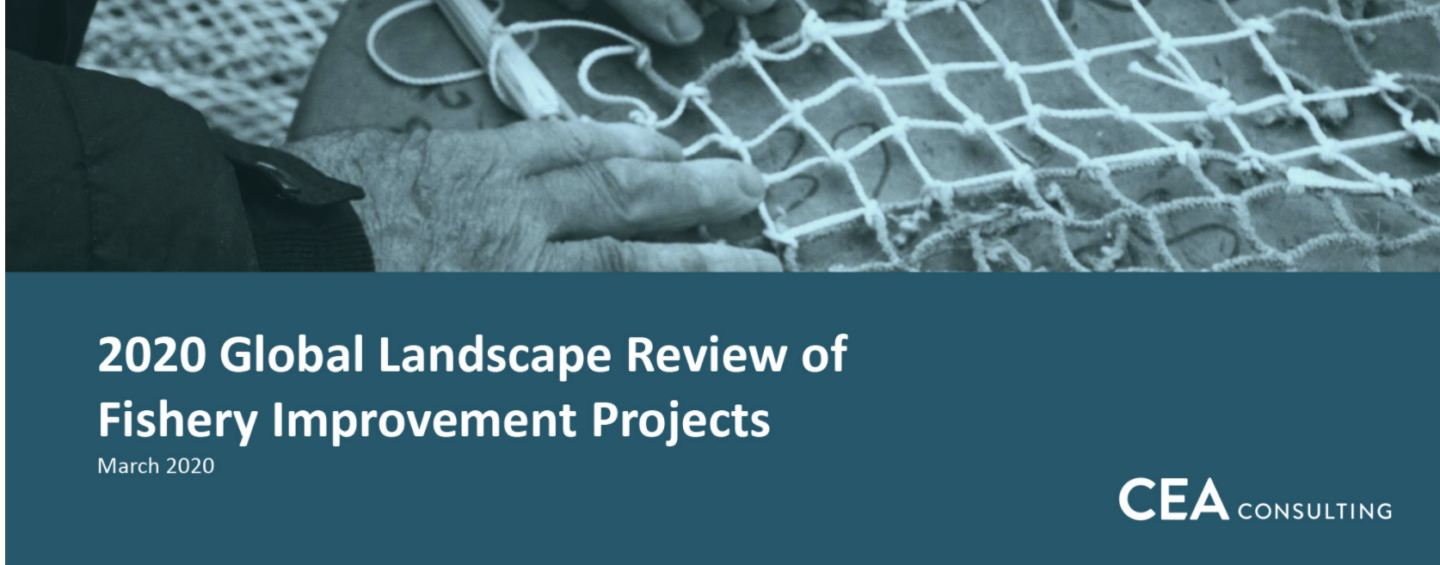Fishery improvement projects (FIPs) continue to be an effective and important driver for positive change in the seafood sector, according to a major study by CEA Consulting on the state FIPs in 2020. The Global Landscape Review of Fishery Improvement Projects combines data on FIP performance with insights from more than 250 FIP implementers and stakeholders to analyze how FIPs have grown and evolved since 2015. Between 2015 and 2019, the number of active FIPs grew from 83 to 136, now covering fisheries in more than 50 countries around the world.
The report commends SFP’s Target 75 (T75) Initiative for playing an important role in engaging the “mass middle” of the seafood sector in FIPs, helping increase engagement in sectors such as squid and octopus that were previously uninvolved in sustainability, and supporting industry in determining where to focus its efforts.
A key finding of the study is that industry now leads at least 70 FIPs, more than any other third-party implementer. This change has come about as many of the original creators and implementers of FIPs, including SFP, have transitioned to a more advisory role in the projects.
The analysis found that industry implementers were most often motivated by the need to maintain access to markets that are increasingly demanding sustainable seafood supplies.
The most successful FIPs, the report notes, are those where end buyers show consistent support for and interest in the improvement actions, regularly monitoring the FIP ratings and asking questions about progress. “This report’s findings emphasize the need for end buyers to not simply buy from FIPs to check a box, but to demonstrate active interest in their progress, ensure that they are really getting FIP product, and to regularly provide encouragement to participants,” SFP’s Programs Division Director Kathryn Novak said.
This finding also points to the need for engagement at all stages of the supply chain for incentivizing sustainability. The importance of engagement throughout the supply chain is what underpins SFP’s Supply Chain Roundtables (SRs), which bring together suppliers from around the world to cooperate in a pre-competitive environment to drive change in specific seafood sectors. “FIPs are really an emerging science, especially in sectors like squid and octopus, so insights learned from these projects are invaluable,” said Stavis Seafoods Chief Sustainability Officer Richard Stavis. “The Supply Chain Roundtables play a crucial role in that they enable monitoring of improvement projects and also information sharing on improvements across a sector. They also serve as a signpost, alerting participants to FIP activities and highlighting opportunities for supply chain stakeholders to engage in improvements.”
The report also found that FIPs are being implemented in increasingly difficult fisheries in the developing world and noted that FIPs in those fisheries may take longer to achieve their objectives. There is also growing support for increased attention to social and economic conditions in fishing communities. Nearly 20 percent of FIPs now include a focus on community development or human rights issues.
The success of FIPs can be attributed in part to the existing support system that helps project implementers to create and manage FIPs and seafood buyers to evaluate FIP progress in making purchasing decisions, the report noted, referencing SFP’s FIP rating system, the FisheryProgress.org reporting website, and the University of Washington’s FIP Database.
Click here for more information on SFP’s FIP Evaluation program, and here for more on the range of seafood industry services offered by SFP, including a comprehensive FIP Toolkit.
Click here to download the report, including summary documents.

